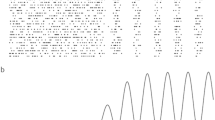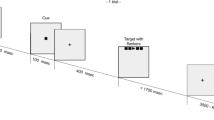Use of the sLORETA method in 62 adult subjects with different intelligence levels located sources generating rhythms in the frequency band 8–12 Hz during observation, performance, and imitation of circular movements with a computer mouse by the experimenter. A relationship between the level of intelligence and differences in the spatial patterns of cerebral cortex activation during performance and imitation of movements was seen. More marked and localized activation of neocortical structures was seen in adult subjects with high levels of general intelligence. Differences in the activation of cortical areas in groups with different general intelligence levels were largely mediated by structures in the right hemisphere, which is involved in processes of visuomotor coordination and the discrimination of own from others’ actions. The greater involvement of the precentral, cingulate, and postcentral gyri of the left hemisphere in the process of imitating the experimenter’s movements in the group with high intelligence may point to a higher level of activation of the mirror system of the brain.
Similar content being viewed by others
References
Alikina, M. A., Makhin, S. A., and Pavlenko, V. B., “People with high levels of general intelligence demonstrate more marked desynchronization of the μ rhythm on observation of the actions of others,” Uch. Zapis. Krym. Fed. Univ. im. Vernadskogo. Biol. Khim., 4, No. 3, 26–34 (2018).
Anwar, M. N., Navid, S. N., Khan, M., and Kitajo, K., “A possible correlation between performance IQ, visuomotor adaptation ability and mu suppression,” Brain Res., 1603, No. 7, 84–93 (2015).
Banker, L. and Tadi, P., Neuroanatomy. Precentral Gyrus, StatPearls Publishing (2019).
Brass, M., Ruby, P., and Spengler, S., “Inhibition of imitative behaviour and social cognition,” Philos. Trans. R. Soc. Lond. B Biol. Sci., 364, No. 1528, 2359–2367 (2009).
Campbell, M. E. J., Mehrkanoon, S., and Cunnington, R., “Intentionally not imitating: Insula cortex engaged for top-down control of action mirroring,” Neuropsychologia, 111, 241–251 (2018).
Candidi, M., Urgesi, C., Ionta, S., and Aglioti, S. M., “Virtual lesion of ventral premotor cortex impairs visual perception of biomechanically possible but not impossible actions,” Soc. Neurosci., 3, No. 3–4, 388–400 (2008).
Cavanna, A. and Trimble, M., “The precuneus: a review of its functional anatomy and behavioural correlates,” Brain, 129, No. 3, 564–583 (2006).
Cross, K. A., Torrisi, S., Reynolds Losin, E. A., and Iacoboni, M., “Controlling automatic imitative tendencies: Interactions between mirror neuron and cognitive control systems,” NeuroImage, 83, 493–504 (2013).
de Munck, J. C., Gonçalves, S. I., Mammoliti, R., et al., “Interactions between different EEG frequency bands and their effect on alpha–fMRI correlations,” NeuroImage, 47, No. 1, 69–76 (2009).
Dedovic, K., Slavich, G. M., Muscatell, K. A., et al., “Dorsal anterior cingulate cortex responses to repeated social evaluative feedback in young women with and without a history of depression,” Front. Behav. Neurosci., 10, 64–76 (2016).
Denny, B. T., Kober, H., Wager, T. D., and Ochsner, K. N., “A meta-analysis of functional neuroimaging studies of self and other judgments reveals a spatial gradient for mentalizing in medial prefrontal cortex,” J. Cogn. Neurosci., 24, No. 8, 1742–1752 (2012).
Doppelmayr, M., Klimesch, W., Hödlmoser, K., et al., “Intelligence related upper alpha desynchronization in a semantic memory task,” Brain Res. Bull., 66, No. 2, 171–177 (2005).
Duffy, K. A., Luber, B., Adcock, R. A., and Chartrand, T. L., “Enhancing activation in the right temporoparietal junction using theta-burst stimulation: Disambiguating between two hypotheses of top-down control of behavioral mimicry,” PLoS One, 14, No. 1, e0211279 (2019).
Duncan, J., “frontal lobe function and general intelligence: why it matters,” Cortex, 41, No. 2, 215–217 (2005).
Fox, N. A., Bakermans-Kranenburg, M. J., Yoo, K. H., et al., “Assessing human mirror activity with EEG mu rhythm: a meta-analysis,” Psychol. Bull., 142, No. 3, 291–313 (2016).
Frenkel-Toledo, S., Bentin, S., Perry, A., et al., “Dynamics of the EEG power in the frequency and spatial domains during observation and execution of manual movements,” Brain Res., 1509, 43–57 (2013).
Harding, I. H., Yücel, M., Harrison, B. J., et al., “Effective connectivity within the frontoparietal control network differentiates cognitive control and working memory,” NeuroImage, 106, 144–153 (2015).
Hecht, E. E. and Parr, L. A., “The chimpanzee mirror system and the evolution of frontoparietal circuits for action observation and social learning,” in: New Frontiers in Mirror Neurons Research, Ferrari, P. and Rizzolatti, G. (eds.), Oxford University Press, Oxford (2015), pp. 153–181.
Hobson, H. M. and Bishop, D. V. M., “The interpretation of mu suppression as an index of mirror neuron activity: past, present and future,” R. Soc. Open Sci., 4, No. 3, 160662–83 (2017).
Jeon, H. and Lee, S.-H., “From neurons to social beings: Short review of the mirror neuron system research and its socio-psychological and psychiatric implications,” Clin. Psychopharmacol. Neurosci., 16, No. 1, 18–31 (2018).
Jiang, J., Borowiak, K., Tudge, L., et al., “Neural mechanisms of eye contact when listening to another person talking,” Soc. Cogn. Affect. Neurosci., 12, No. 2, 319–328 (2017).
Kaida, A. I., Makhin, S. A., Eismont, E. V., and Pavlenko, V. B., “Developmental dynamics and topography of the individual reactivity of the EEG μ rhythm in children aged 4–14 years,” Vestn. Tomsk Gos. Univ. Biol., 45, 106–127 (2019).
Keenan, J. P., Wheeler, M. A., Gallup, G. G., and Pascual-Leone, A., “Selfrecognition and the right prefrontal cortex,” Trends Cogn. Sci., 4, No. 9, 338–344 (2000).
Keysers, C., and Gazzola, V., “Social neuroscience: mirror neurons recorded in humans,” Curr. Biol., 20, No. 8, 353–354 (2010).
Krall, S. C., Rottschy, C., Oberwelland, E., et al., “The role of the right temporoparietal junction in attention and social interaction as revealed by ALE meta-analysis,” Brain Struct. Funct., 220, No. 2, 587–604 (2014).
Kropf, E., Syan, S. K., Minuzzi, L., and Frey, B. N., “From anatomy to function: the role of the somatosensory cortex in emotional regulation,” Braz. J. Psychiatry, 41, No. 3, 261–269 (2018).
Lago-Rodriguez, A., Cheeran, B. J., Koch, G., et al., “The role of mirror neurons in observational motor learning: an integrative review,” Eur. J. Hum. Movement, 32, 82– (2014).
Lebedeva, N. N., Karimova, E. D., Karpychev, V. V., and Mal’tsev, V. Yu., “The mirror system of the brain on observation, performance, and imagination of motor tasks – neurophysiological reflection of the perception of the consciousness of others,” Zh. Vyssh. Nerv. Deyat., 68, No. 2, 204–215 (2018).
Lebedeva, N. N., Zufman, A. I., and Mal’tsev, V. Yu., “The mirror neuron system of the brain: the key to learning, personality formation, and understanding of the consciousness of others,” Usp. Fiziol. Nauk., 48, No. 4, 16–28 (2017).
Leech, R. and Sharp, D. J., “The role of the posterior cingulate cortex in cognition and disease,” Brain, 137, No. 1, 12–32 (2014).
Makhin, S. A., Makaricheva, A. A., Lutsyuk, N. V., and Pavlenko, V. B., “Studies of μ-rhythm reactivity on observation, auditory perception, and imitation of movements: interaction with personality properties determining empathy,” Fiziol. Cheloveka, 41, No. 6, 28–35 (2015).
Molenberghs, P., Cunnington, R., and Mattingley, J. B., “Brain regions with mirror properties: A meta-analysis of 125 human fMRI studies,” Neurosci. Biobehav. Rev., 36, No. 1, 341–349 (2012).
Mukamel, R., Ekstrom, A. D., Kaplan, J., et al., “Single-neuron responses in humans during execution and observation of actions,” Curr. Biol., 20, No. 8, 750–756 (2010).
Nacharova, M. A., Makhin, S. A., and Pavlenko, V. B., “Characteristics of the interaction between individual α-rhythm peak frequency and the features of general intelligence,” Uch. Zapis. Krym. Fed. Univ. im. Vernadskogo. Biol. Khim., 5, No. 2, 132–144 (2019).
Pascual-Marqui, R., “Standardized low-resolution brain electromagnetic tomography (sLORETA, technical details,” Methods Find. Exp. Clin. Pharmacol., 24, No. Suppl. D, 5–12 (2002).
Paus, T., “Primate anterior cingulate cortex: where motor control, drive and cognition interface,” Nat. Rev. Neurosci., 2, No. 6, 417–424 (2001).
Raven, J. C. and Court, J. H., Manual for Raven’s Progressive Matrices and Vocabulary Scales [Russian translation], Cogito-Center, Moscow (2012).
Raymaekers, R., Wiersema, J. R., and Roeyers, H., “EEG study of the mirror neuron system in children with high functioning autism,” Brain Res., 1304, 113–121 (2009).
Santiesteban, I., Banissy, M. J., Catmur, C., and Bird, G., “Enhancing social ability by stimulating right temporoparietal junction,” Curr. Biol., 22, No. 23, 2274–2277 (2012).
Saygin, A. P., “Superior temporal and premotor brain areas necessary for biological motion perception,” Brain, 130, No. 9, 2452–2461 (2007).
Shamay-Tsoory, S. G., Tomer, R., Berger, B. D., and Aharon-Peretz, J., “Characterization of empathy defi cits following prefrontal brain damage: the role of the right ventromedial prefrontal cortex,” J. Cogn. Neurosci., 15, No. 3, 324–337 (2003).
Spengler, S., von Cramon, D. Y., and Brass, M., “Control of shared representations relies on key processes involved in mental state attribution,” Hum. Brain Mapp., 30, No. 11, 3704–3718 (2009).
Tognoli, E. and Kelso, J. A., “The coordination dynamics of social neuromarkers,” Front. Hum. Neurosci., 20, No. 9, 563–578 (2015).
Uddin, L. Q., Molnar-Szakacs, I., Zaidel, E., and Iacoboni, M., “rTMS to the right inferior parietal lobule disrupts self-other discrimination,” SCAN, 1, No. 1, 65–71 (2006).
Varlamov, A. A., Portnova, G. V., and Makgloun, F. F., “The C-tactile system and the neurobiological mechanisms of ‘emotional’ tactile perception: discovery and current state of research,” Zh. Vyssh. Nerv. Deyat., 69, No. 3, 280–293 (2019).
Yang, J., Kitada, R., Kochiyama, T., et al., “Brain networks involved in tactile speed classification of moving dot patterns: the effects of speed and dot periodicity,” Sci. Rep., 7, 40931–40943 (2017).
Zald, D. H. and Andreotti, C., “Neuropsychological assessment of the orbital and ventromedial prefrontal cortex,” Neuropsychologia, 48, No. 12, 3377–3391 (2010).
Author information
Authors and Affiliations
Corresponding author
Additional information
Translated from Zhurnal Vysshei Nervnoi Deyatel’nosti imeni I. P. Pavlova, Vol. 70, No. 4, pp. 446–459, July–August, 2020.
Rights and permissions
About this article
Cite this article
Nacharova, M.A., Makhin, S.A. & Pavlenko, V.B. Localization of Sources Generating the EEG α Rhythm during Observation, Performance, and Imitation of Operant Movements in Subjects with Different Intelligence Levels. Neurosci Behav Physi 51, 182–191 (2021). https://doi.org/10.1007/s11055-021-01056-8
Received:
Revised:
Accepted:
Published:
Issue Date:
DOI: https://doi.org/10.1007/s11055-021-01056-8




